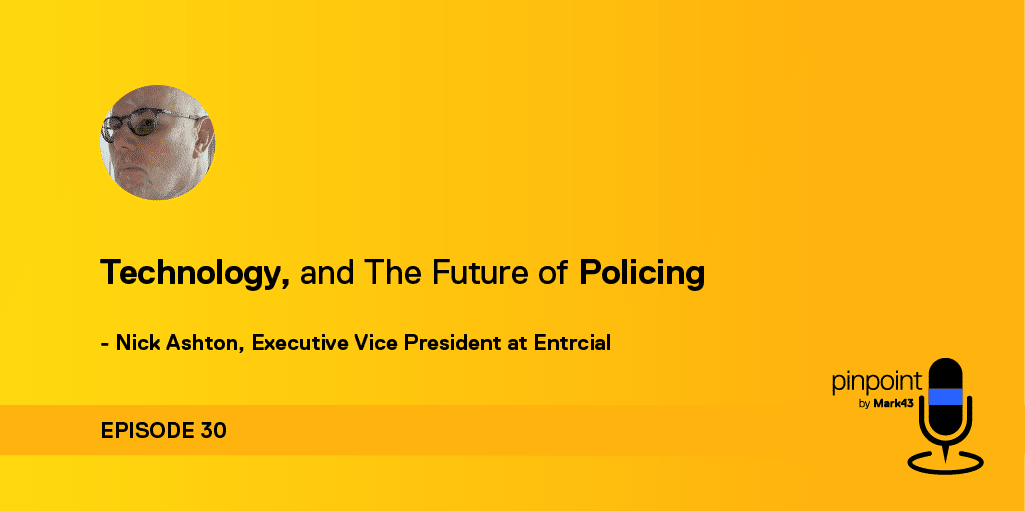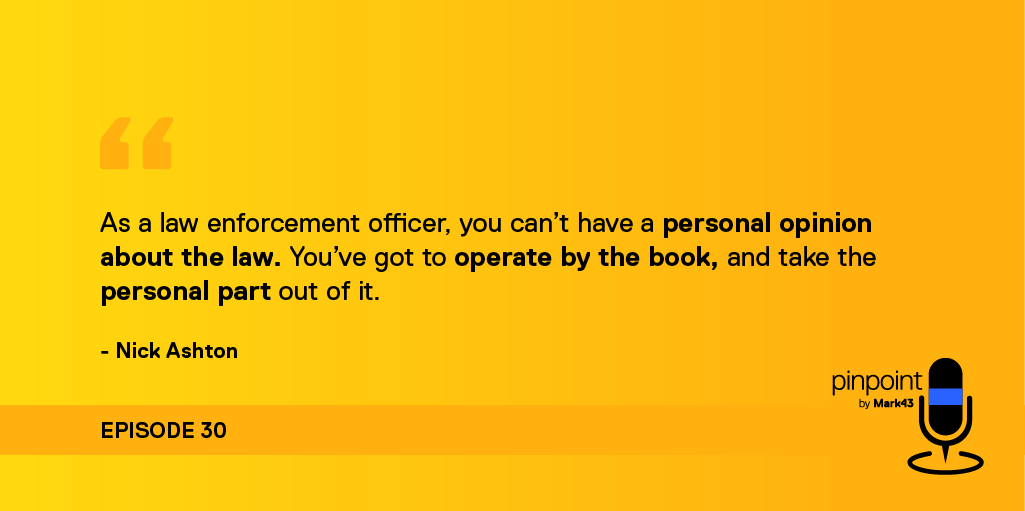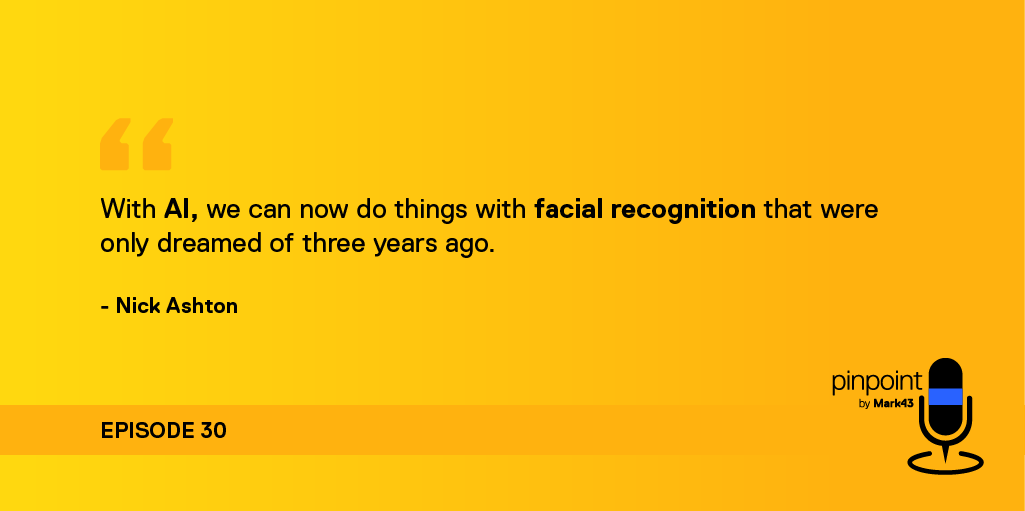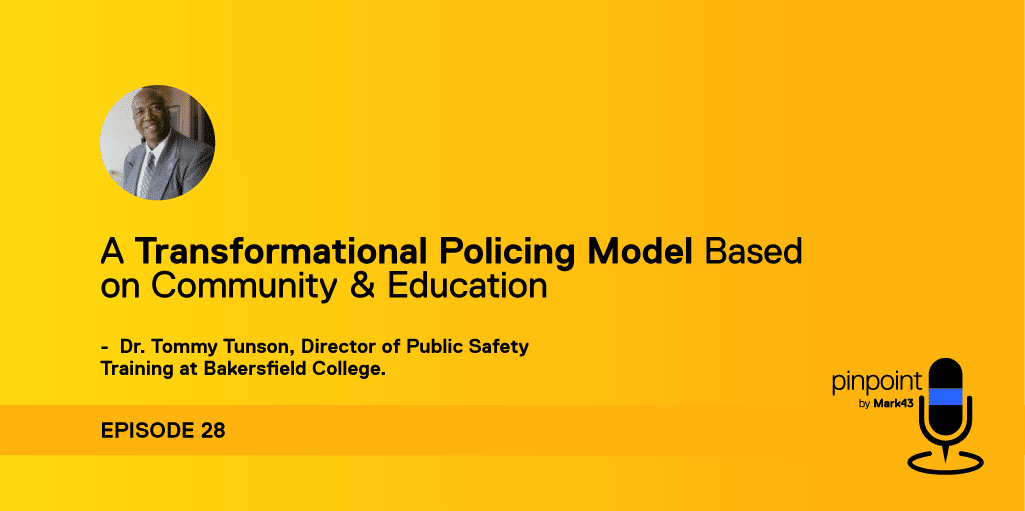Ep 30: Technology and The Future of Policing w/ Nick Ashton
Kristen Goode | 29 December 2020 | 4 minute read

It’s no secret that times are tense right now, especially in the United States. In the wake of a year that saw a pandemic sweep across the country, along with racial tensions, not to mention a contentious election, tensions are high.
And few places highlight that tension more than the public attitudes towards law enforcement. No matter which side of the discussion you may find yourself drawn towards, we can all agree on at least this one thing: being a law enforcement officer is a difficult job.
On this episode of Pinpoint, we talk with Nick Ashton. Nick is a former member of the Metropolitan Police of London, and is currently the Executive Vice President of Entrical, a communications and security company.
Throughout our discussion, Nick highlighted the evolution of law enforcement over the past fifty years, why we need neighborhood and community policing, how policing will change moving into 2021, and how agencies and departments can use technology to better allow them to serve their communities.
The Evolution of Law Enforcement
It may seem like the understatement of the year, but the role of the law enforcement officer has changed dramatically in the last fifty or so years. Sir Robert Peel is famous for coining his 9 principles of policing back in 1829, and one of those is that “The people are the police, and the police are the people.”
Part of what we’ve lost in the last fifty years, according to Nick, is the community spirit of policing. At one point, the officers that kept neighborhoods safe were a part of those neighborhoods, and if they weren’t, they knew all of the people in those neighborhoods.
One of the most important parts of policing is making the officers that patrol our neighborhoods responsible for knowing the people in those neighborhoods. By not just coming around when something goes wrong, but also making themselves a presence in those neighborhoods when things are going well.
Also crucial is this notion of community policing. This doesn’t mean that we need neighborhoods full of vigilantes, but the reality is that 911 is becoming increasingly irrelevant because officers simply cannot get to scenes fast enough. But what does community policing look like?
Neighborhood & Community Policing
The first step is realizing that as a law enforcement officer, you are not a warrior. You are a guardian. Social Media and Hollywood have made law enforcement officers out to be warriors. Strapping on a gun every day and headed out to bust all the bad guys. And while it’s true that officers do carry firearms and they do hopefully arrest criminals, there is so much more to being an officer than those things.
As an officer, you’ve got a lot resting on your shoulders. You’ve got to stop and look at the example that you’re setting for the people in the community, particularly the young kids. Are you a role model they can look up to? Are you modeling something that you’d want them to grow up to be?
That doesn’t mean you’re a pushover. It means that you’re respecting color, class, and creed, but when it comes to criminality, you have no wiggle room. You don’t get to have a personal opinion about the law.

All this means that law enforcement and policing is going to change in 2021. But how?
Policing in 2021
The truth is that it takes money to police effectively. It takes money to recruit officers, provide training, and to implement technology that will allow officers to better serve their communities and ultimately save lives.
Technology will play a crucial role in policing in 2021 and beyond. By implementing cutting edge technologies, agencies can be more efficient, and do their jobs in a better, more meaningful way. What sort of technologies will be in play in 2021?
Electronic Warrants
While it can sometimes take days to acquire warrants, Nick and his team at Entrical provide the technology for electronic warrants, reducing that time to a national average of sixteen minutes, with the judge and the officers never having to meet. As you can imagine, this is a huge selling point during a pandemic.
Cameras in Vehicles
Imagine pulling over a vehicle. As you approach, the camera in your car is looking at the license plate, and is reading you back, out loud, the DMV information so that you can keep your eyes on the car. Then the software pulls up every other officer that has ever stopped this particular vehicle, and for what reason.
So you as the officer are heading into the situation with a level of confidence that you wouldn’t have had without the technology to get you this information prior to even approaching the driver’s window.
Mobile Phones
Mobile phones aren’t new technology. But more and more departments are embracing mobile phone technology. An officer can snap a photo of the driver’s license, and immediately get back, in their earpiece, any outstanding warrant information on the driver. Again, allowing for a more confident, safer situation for the officer.
Facial Recognition
This isn’t just limited to law enforcement officers. Facial recognition is everywhere already. If you walk around the city of London on an average day, you’re seen by over 4,000 cameras. What is new and exciting is the advances in technology of facial recognition. From being able to recognize people from just their eyes, to allowing folks to look at their phones to monitor for facial movements prior to a stroke, to facial recognition in office buildings.

Being a law enforcement officer isn’t an easy job. But nobody ever signed up to be an officer because it was easy. They did it because they wanted to serve their communities and help people. And with the right investments in technology, agencies can ensure that they remain efficient and effective.
Reference to any specific product or entity does not constitute an endorsement or recommendation by Mark43, Inc.. The views expressed by guests are their own and their appearance on the program does not imply an endorsement of them or any entity they represent. Views and opinions expressed by Mark43, Inc. employees are those of the employees and do not necessarily reflect the view of Mark43, Inc.




